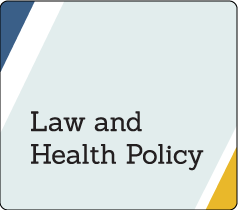This content was part of the Healthy People 2020 Law and Health Policy project, which ended in 2020.
Healthy People 2020 Law and Health Policy Project Webinar Summary
The Healthy People 2020 Law and Health Policy Project webinar held on October 31, 2018 — Exploring Evidence-Based Legal and Policy Strategies to Prevent Fatal Injuries and Violence — examined the impact of evidence-based law and policy approaches for addressing the Injury and Violence Leading Health Indicators: reduce fatal injuries and reduce homicides. The webinar featured the following presentations:
Angela McGowan, JD, MPH, Director of the Law and Health Policy Project within the Department of Health and Human Services (HHS) Office of Disease Prevention and Health Promotion (ODPHP), gave an overview of the Healthy People Initiative, as well as the Law and Health Policy Project. She also shared strategies for finding evidence-based legal and policy approaches that focus on reducing injury and preventing violence.
Montrece Ransom, JD, MPH, from the Centers for Disease Control and Prevention (CDC) Public Health Law Program, discussed efforts to build the capacity of the public health system by leveraging legal and policy tools to improve population health outcomes.
Joe Schilling, JD, a researcher from the Urban Institute, highlighted ways that legal and policy efforts to address blighted or vacant properties impact the health of individuals and communities.
About Healthy People and the Law and Health Policy Project
Healthy People is an HHS-led initiative aimed at improving population health and achieving health equity across the nation. For several decades, Healthy People has maintained a set of science-based national objectives for improving health, which has been the framework for public health priorities and actions. Healthy People 2020 featured more than 1,200 objectives across 42 topic areas. In addition, Healthy People 2020 identified Leading Health Indicators (LHIs), which were a subset of 26 Healthy People objectives across 12 topic areas that represented high-priority public health issues and actions that could be taken to address them.
The Law and Health Policy Project was a collaboration between ODPHP, the Centers for Disease Control and Prevention (CDC), the CDC Foundation, and the Robert Wood Johnson Foundation (RWJF). It aimed to improve the health of communities through sharing information about evidence-based law and policy interventions. The project used the best data to describe the health objectives and issues being addressed, and it created reports examining the relationship between population health and law and policy interventions — specifically, how law and policy could be useful tools to improve health.
Law and Health Policy Resources and Activities:
- In-depth topic-specific reports
- Bright Spots, which showcase ways legal and policy interventions can improve health in communities
- Webinar series highlighting legal and policy research and approaches to address public health
- Resources to support the development of Healthy People 2030
Role of Law and Policy in Evidence-Based Public Health Practice: Angela McGowan, ODPHP
Evidence-based public health practice prioritizes the development, implementation, evaluation, and dissemination of effective solutions to public health threats and challenges. Scientifically sound and easily accessible information about what works, including legal and policy interventions, can aid decision-makers, public health practitioners, and other stakeholders in building and sustaining healthy communities. Well-respected entities — including government agencies, academic institutions, and nonprofits within and outside of public health—review evidence, rate the extent and quality of the evidence base, and recommend interventions that will impact population health, including legal and policy approaches.
For example, Healthy People shares evidence-based resources and rates them on a scale of 1 to 4, focusing on the evidence of effectiveness, feasibility, reach, and transferability. In this system, a review by the U.S. Preventive Services Task Force (USPSTF) or the Community Preventive Services Task Force (CPSTF) is rated as a 4 rating, while an intervention supported by only 1 or 2 journal articles or small-scale studies would receive a lower rating.



